NVIDIA's GeForce GTX 580: The SLI Update
by Ryan Smith on November 10, 2010 10:00 AM ESTGTX 580 SLI: Setting New Dual-GPU Records
Today’s main event of course is the performance of the GTX 580 in SLI mode. We hope that it doesn’t spoil things for anyone when we say that the GTX 580 in SLI is setting new records for dual-GPU performance in our charts, a natural consequence of pairing up what was already the fastest single GPU card on the market. Since the results are going to be rather self-explanatory, we’ll skip the running commentary here and stick to the charts.
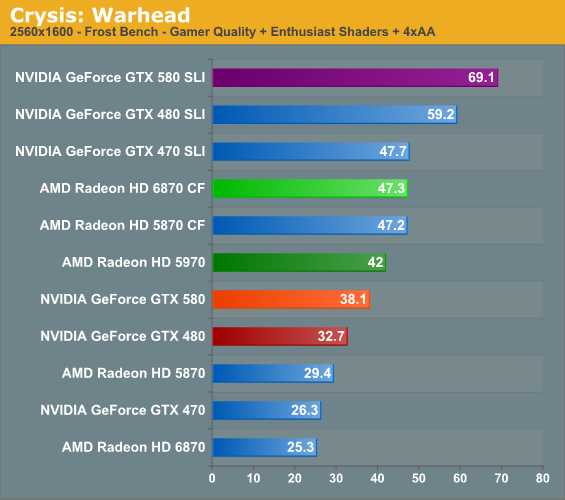
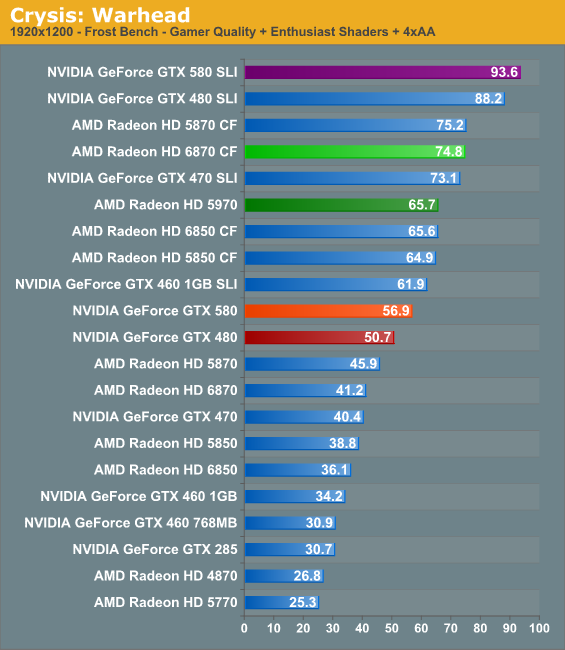
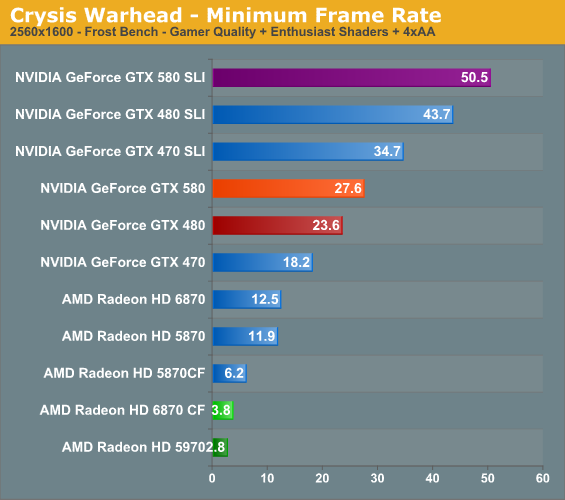
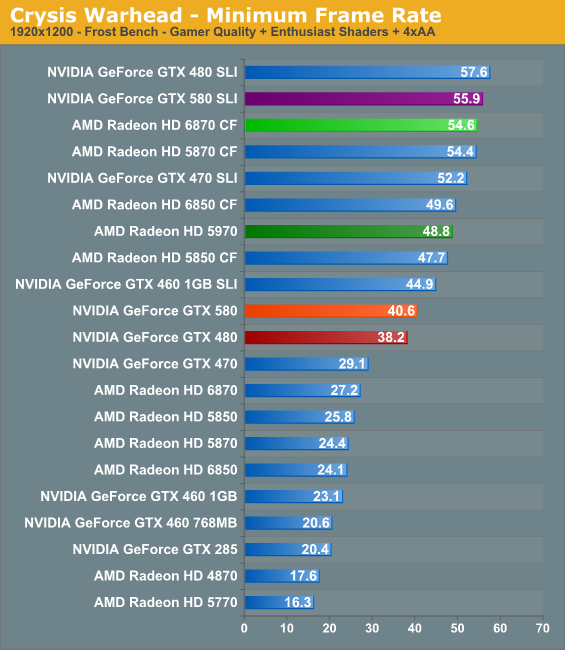
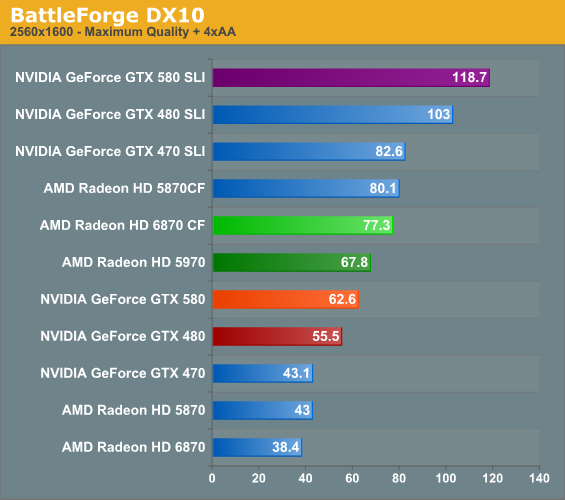

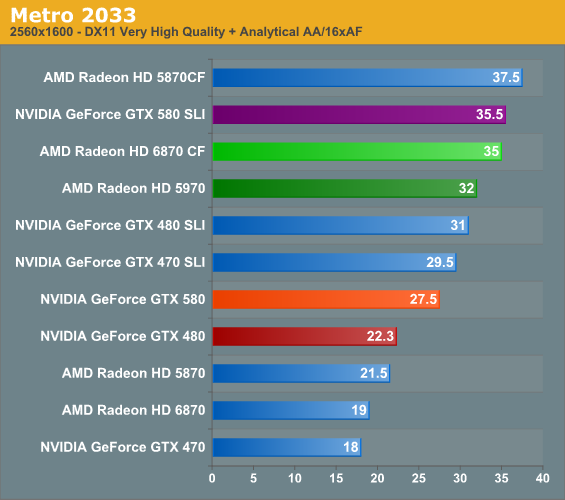
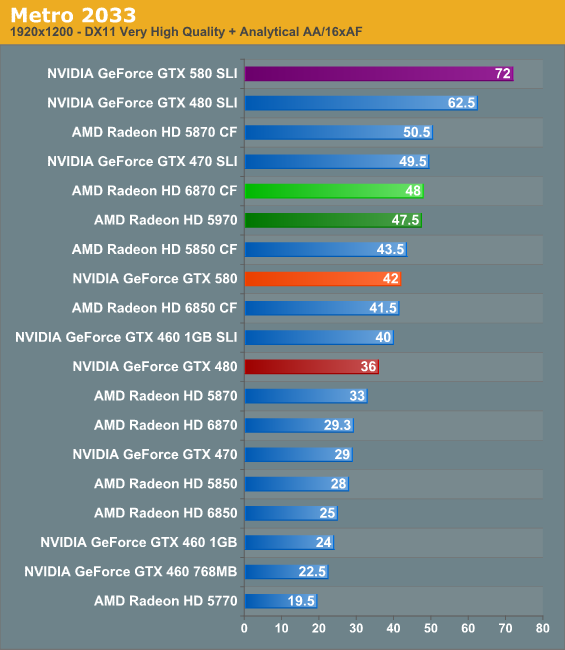
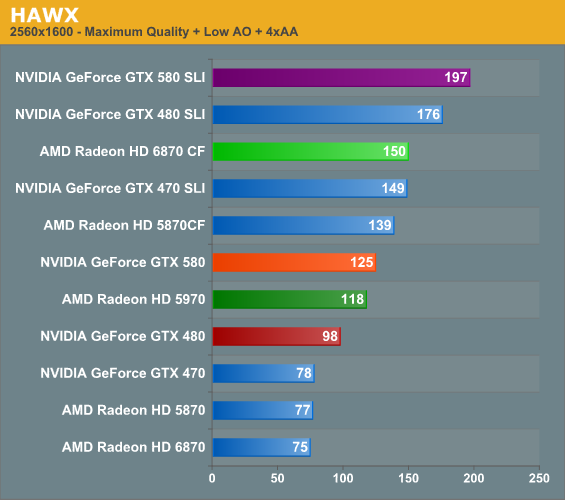
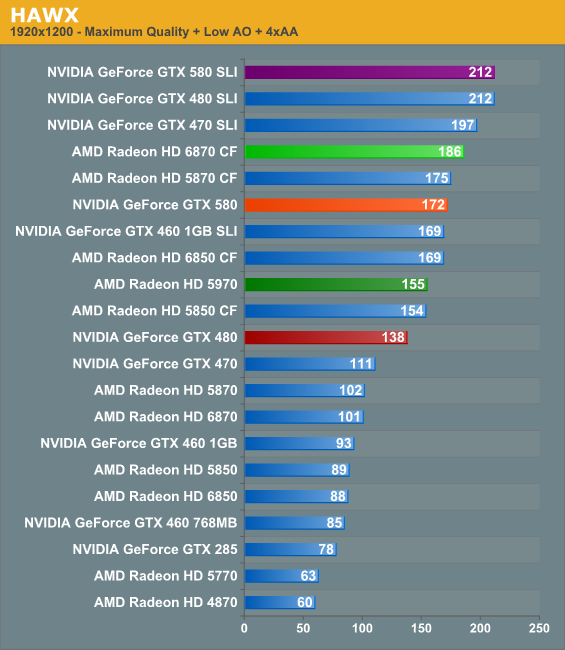
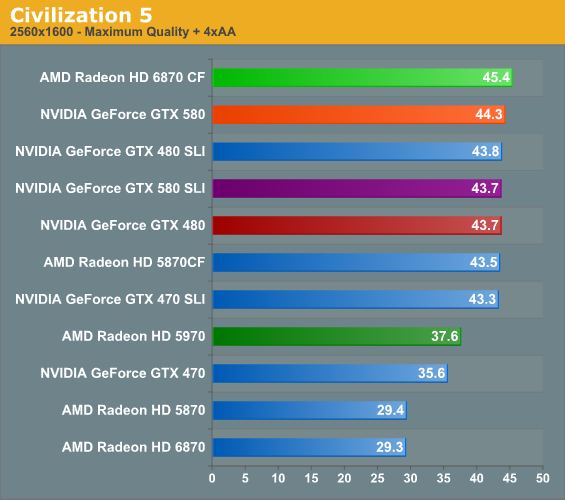


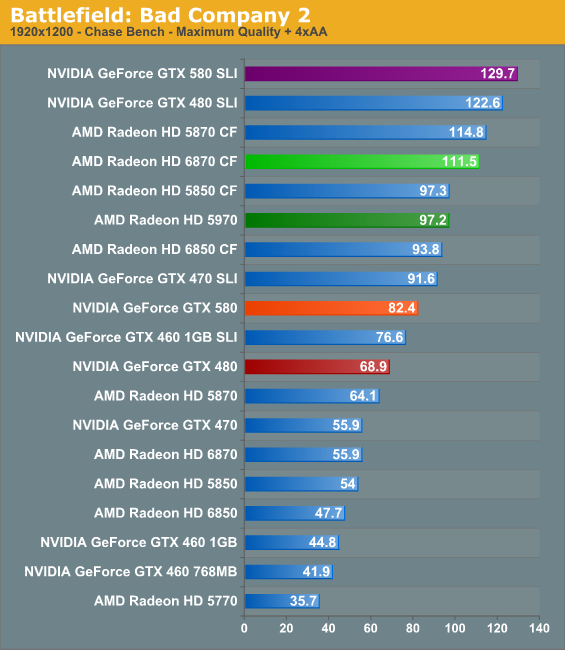
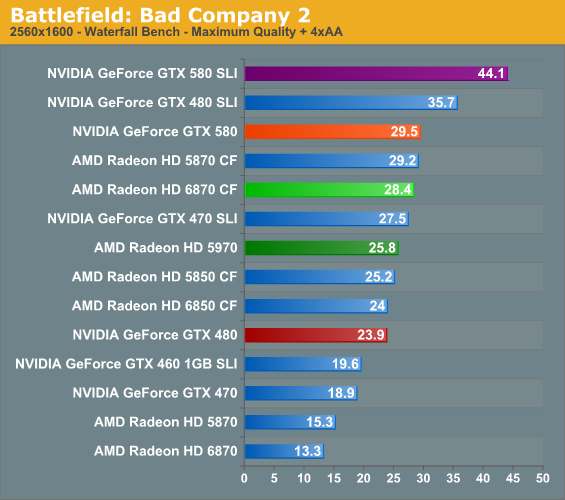
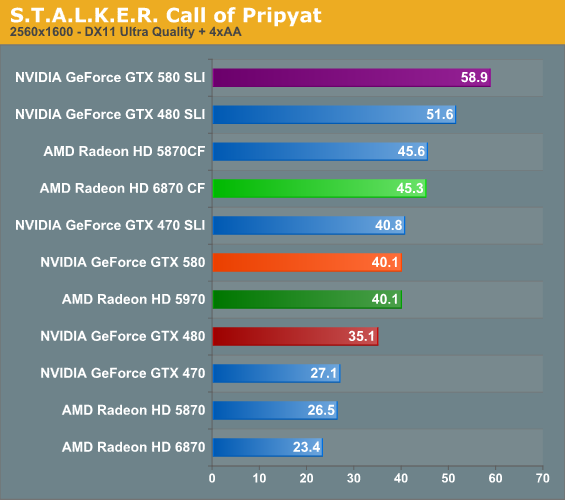
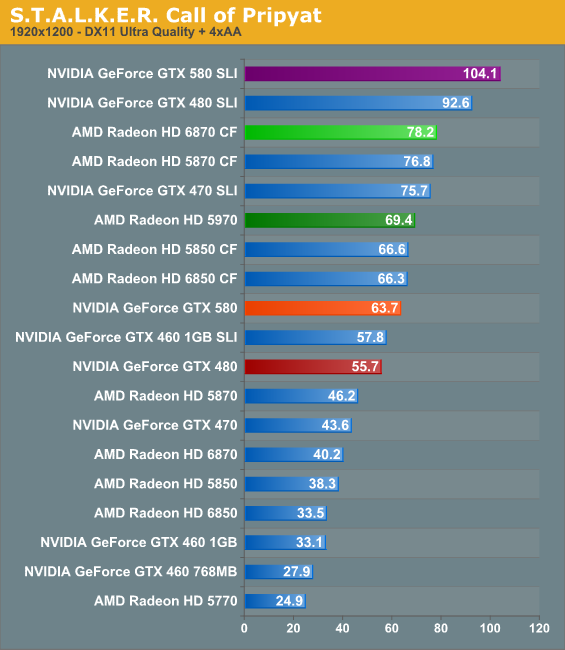

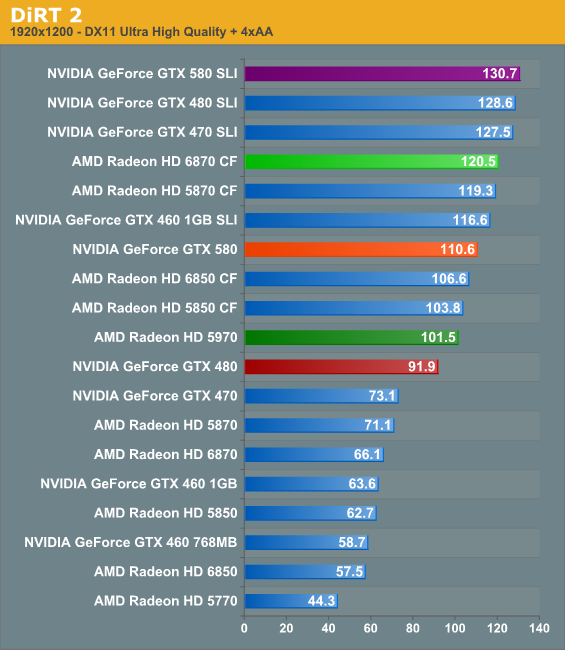
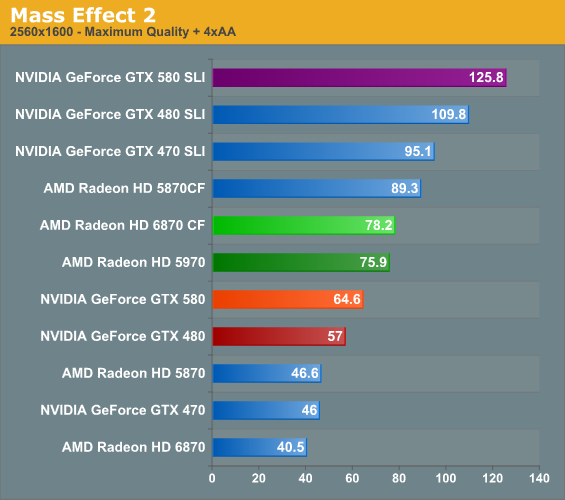
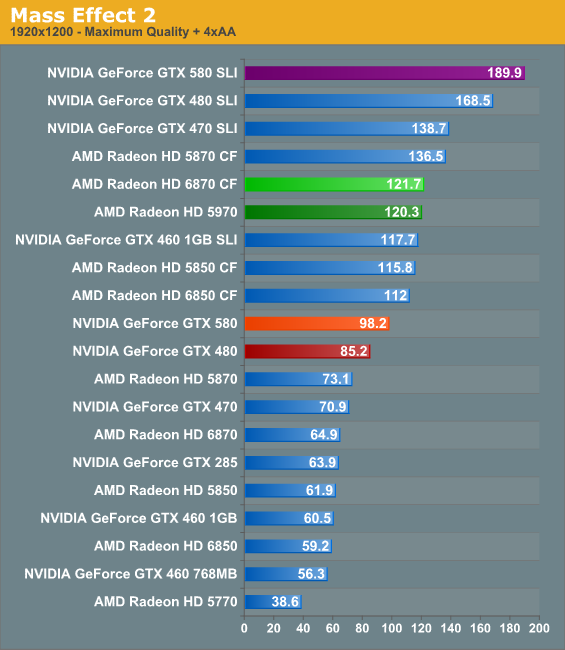
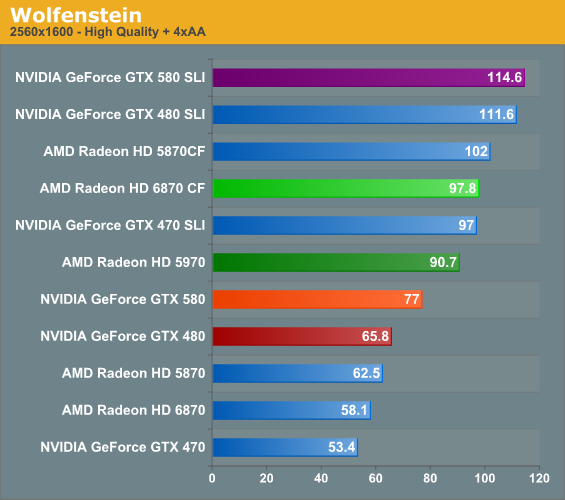
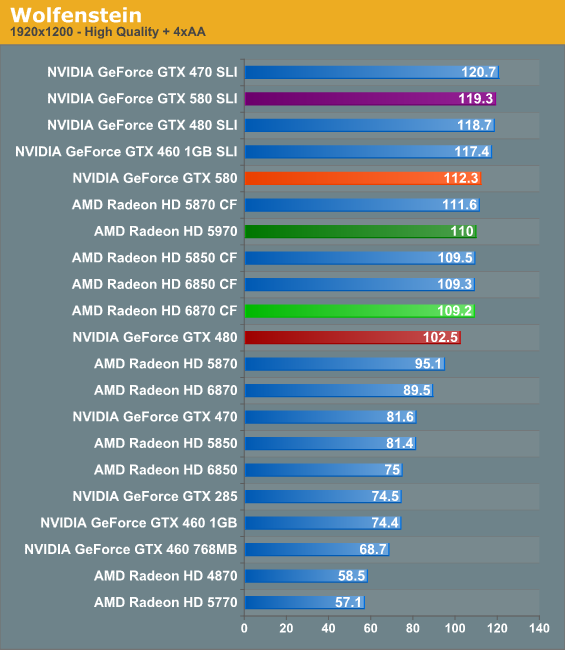
There are two situations where the GTX 580 SLI doesn’t handily beat everything else: Metro 2033, and Civilization V. The latter appears to be yet another incident where NVIDIA’s apparently faulty Civ5 SLI profile is robbing an SLI setup of performance, while Metro 2033 is a more interesting case. At 1920 the 580 SLI is well in the lead, but at 2560 SLI scaling is breaking down, letting the 5870CF take a slight lead.
Meanwhile in other cases we’re clearly running in to CPU limits even at 2560, as both Wolfenstein and HAWX are definitely hitting the wall; though these are already two of our fastest games before including SLI. The good news is that this leaves plenty of performance for eye candy options, as NVIDIA’s fantastic but expensive Transparancy AA and Supersample AA options for DX10 and DX11 are still available. For the IQ nuts out there that won’t settle for anything less than the best, we managed to get the 580 SLI running Crysis with all Enthusiast settings and 4x SSAA at a playable framerate of 42.8fps – albeit at 1680x1050. Perhaps next year’s 28nm die shrink will unlock enough performance that we can seriously start considering SSAA at the very high end?
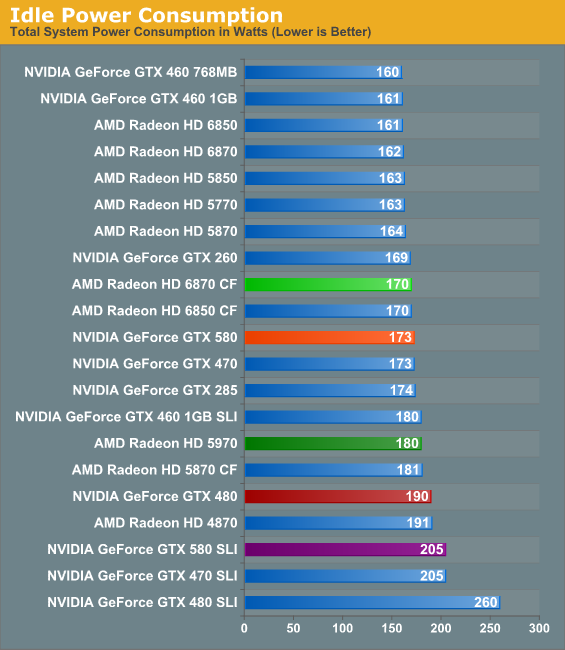
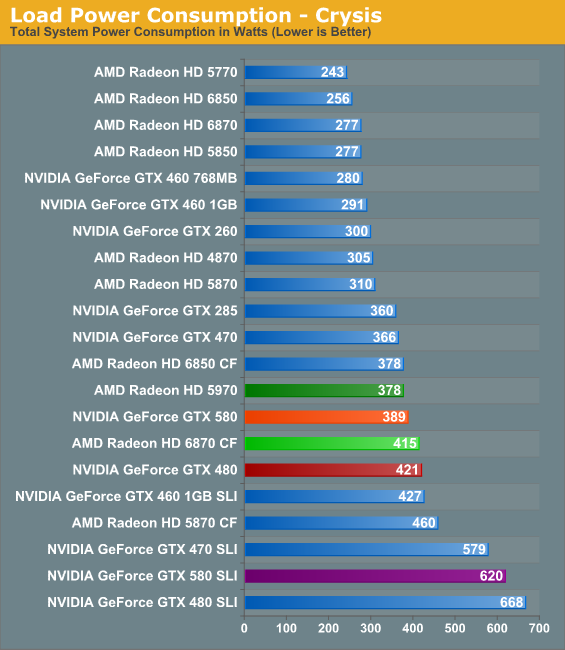
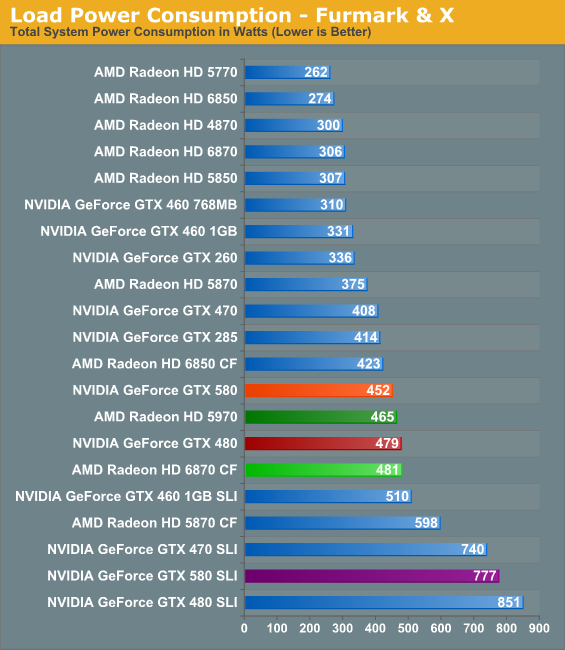
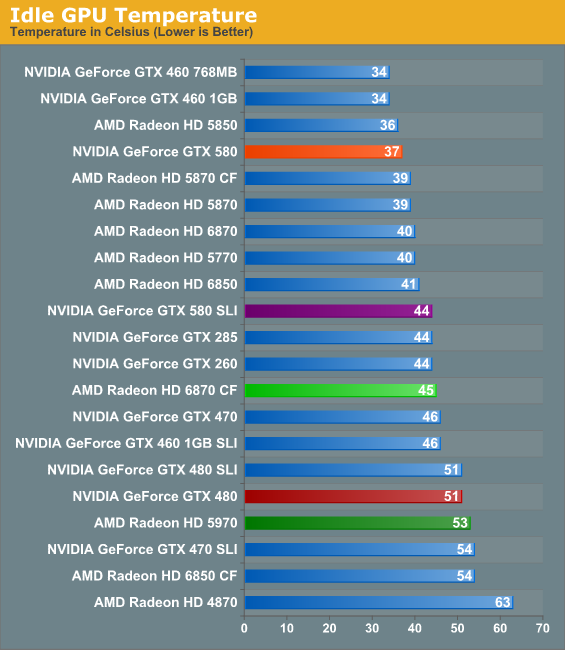
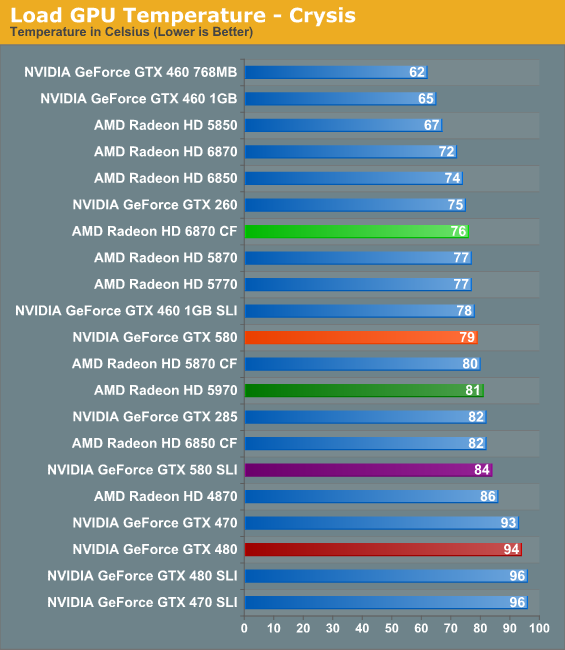
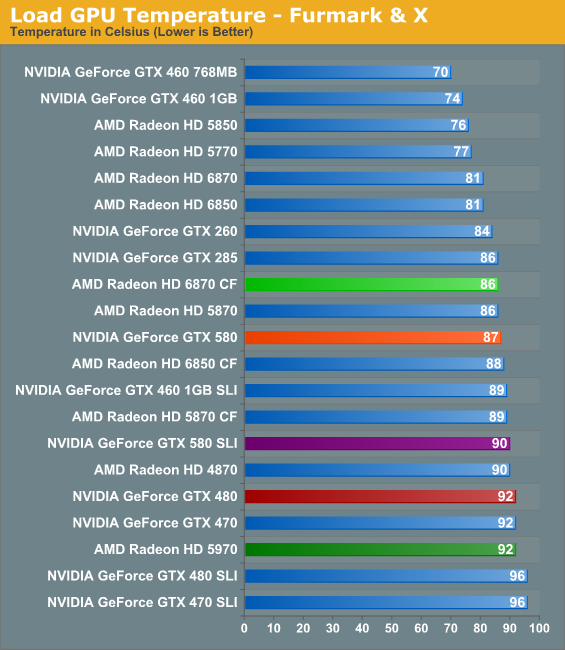
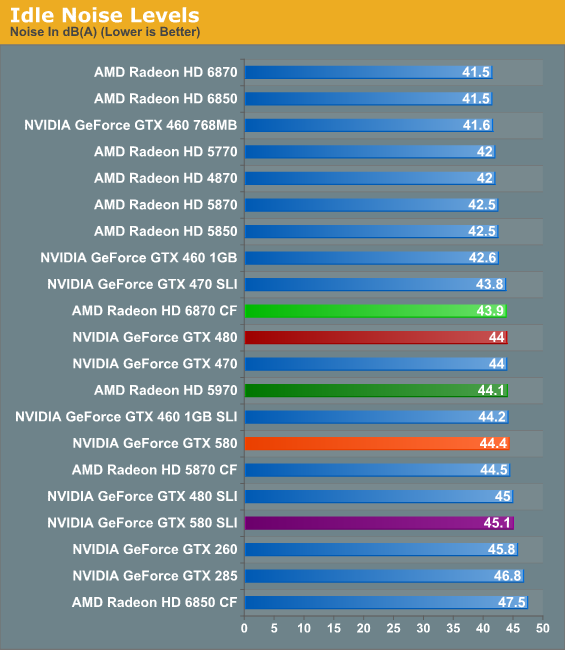
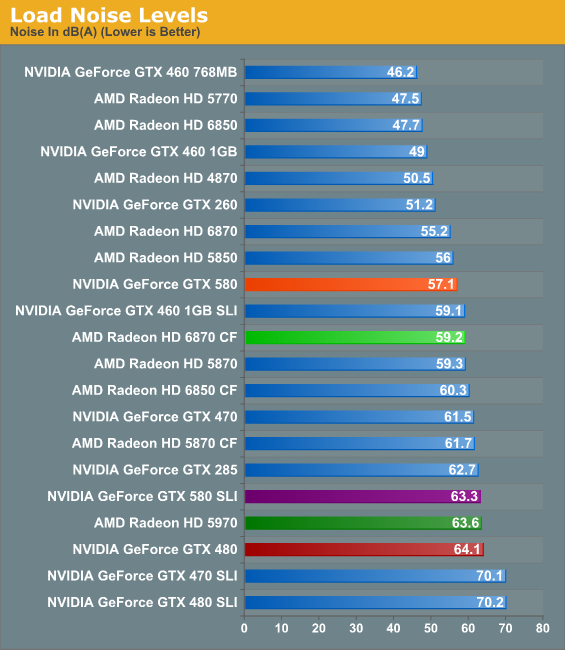
As for power, temperature, and noise, the results are in-line with where we’d expect them to be considering we’re pairing up high-end cards. Compared to the GTX 480 everything is peachy; idle power is down 55W(!), load power is down 40-80W, gaming temperatures are down 10C, and even load noise is way down. Here we see the same 7dB drop as a single GTX 580, bringing the GTX 580 SLI in below the 5970, a single GTX 480, and only slightly above a single GTX 285. Bear in mind that we’re running our cards directly next to each other here to look at the worst case scenario, so given some spacing everything here would be even quieter. Truth be told, we did not really have high hopes here, as we expected the lack of a PCB ventilation hole to take its toll; we’re pleasantly surprised as a result.
On the flipside, we’re still looking at a lot of power consumption – GTX 580 doesn’t change the fact that GF100/110 cards are in their own little universe in SLI compared to the next most power hungry setup, a 5870CF. Meanwhile noise isn’t bad, but if you’re used to a single card then this will probably catch you off guard. So the usual concerns stand with the GTX 580 SLI: make sure you have a solid high wattage power supply, an airy case, and ideally a motherboard with an x16 PCIe slot located farther away from the first one.










82 Comments
View All Comments
tigersty1e - Wednesday, November 10, 2010 - link
I've seen you guys review high-end pre-built gaming systems before. It's not like you had to give the pre built system high praise. 1 page in the review wouldn't have taken away from anything.piroroadkill - Thursday, November 11, 2010 - link
Come on, people moan at AnandTech for all kinds of reasons. It's best to keep it clean and get a retail sample from elsewhere.erple2 - Friday, November 12, 2010 - link
That's a slippery slope to start going down. Ultimately, it's up to Anandtech to decide what they can/can't will/won't review, not up to the whims of some chipmaker (despite that there are only 2 chipmakers these days).Reviewing a pre-built gaming system takes a lot of time and effort to do properly, and anything less degrades the reputation of the review site, even if it's just to jump through hoops with some snooty vendor. "If you're willing to jump through THIS hoop to do what we want here, can we withhold a new card for you on the next launch unless you give us complete editorial powers on that review?"
Ultimately, the separation between the review site and the vendor is extremely important to help ensure unbiased, thorough reviews (something that I've appreciated from Anandtech over the years) complete with "here's a bunch of numbers, but what does this all mean in context" (aka "analysis"). Part of that is not bowing to a vendor's wishes (outside of a standard and acceptable product launch NDA).
LSWilson - Wednesday, November 10, 2010 - link
You guys get to play with the best toys, I could not be more jealous. Keep up the good work.Oxford Guy - Wednesday, November 10, 2010 - link
In Unigine Heaven, the 480 beats the 580, except at 2560x1600. The difference is very dramatic at 1680x1050 and considerable at 1920x1080.http://techgage.com/reviews/nvidia/geforce_gtx_580...
http://techgage.com/reviews/nvidia/geforce_gtx_580...
http://techgage.com/reviews/nvidia/geforce_gtx_580...
Why is that?
I would like to see this matter addressed, as minimum frame rates can make a big difference in perceived performance.
Frankly, I'd like to see an article called "Minimum frame rate shootout" that would compare all the mid-range through high-end cards.
erple2 - Friday, November 12, 2010 - link
Your initial statement is deeply flawed - the 480 beats the 580 IN MINIMUM FRAME RATES, except at 2560x1600.What I'd like more to know is whether the "blip" in minimum frame rates is a temporary spike/drop, or whether it's endemic. But that's something that the average tells you, too.
Oxford Guy - Friday, November 12, 2010 - link
Take a look at the subject line, smart guy.Oxford Guy - Wednesday, November 10, 2010 - link
I believe the poster was referring to the Asus card. Take into account that Asus did a 10 Mhz "overclock" which itself is rather cheesy.keitaro - Wednesday, November 10, 2010 - link
I'd like to request that y'all start testing Eyefinity and Vision Surround setups and resolutions for the games that supports them. Granted, there is a vastly difference in how it is supported in hardware, it'd be nice if any hardware capable of this can be tested.Hauk - Wednesday, November 10, 2010 - link
With GTX 580, 5970, and the 68xx series as exceptions, I've ran every other config on that GPU load temp chart, and have lowered temps drastically using a combination of a mobo that allows card spacing, a proper case, decent airflow, TIM replacement, and an Afterburner fan profile. I'm not talking jet engine; there's a tolerable middle ground with any card/system.As an example, I have GTX 470s right now loading to 70-73c (both cards) in Crysis & Metro 2033, and GTX 480s loading to 78-81c. I don't game on Furmark so it's irrevelant.
It's a shame to see such high numbers knowing that reviewers have done ZERO to find a tolerable medium. I have respect for what they do; but geez, people around the world see this and take it for gospel. You could at least show that temps can be improved..